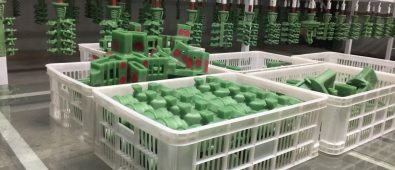Introduction:
When it comes to cardiac arrest outside of a hospital, the reality is far harsher than what we often see on our favorite TV shows. In Australia, only 8% of individuals who experience cardiac arrest outside of a medical facility survive. This staggering statistic highlights the critical importance of understanding and implementing life-saving measures. Accidental Health and Safety Illawarra’s informative blog post, “The Chain of Survival: Life-Saving Links for First Aid and CPR,” explores the vital steps to increase these odds. In this article, we’ll take a closer look at the shocking reality of the 8% survival rate, compare it to Hollywood portrayals, and emphasize the significance of Accidental Health and Safety’s insights in raising these life-saving odds.
The Grim Reality:
In stark contrast to the dramatic scenes we witness on television, the actual survival rate for individuals experiencing cardiac arrest outside of a hospital is alarmingly low at just 8%. This eye-opening statistic demonstrates the urgent need for quick and effective response during medical emergencies. While TV shows may often portray miraculous recoveries, the reality is far more challenging. It underscores the critical importance of equipping ourselves with the knowledge and skills necessary to make a difference.
Bridging the Gap:
Accidental Health and Safety Illawarra’s blog post sheds light on the Chain of Survival, a set of guiding principles that can significantly increase the chances of survival. By understanding and implementing the links in this life-saving chain, we can bridge the gap between the 8% survival rate and a brighter outcome.
Early Access, Early CPR, Early Defibrillation, and Early Advanced Care are the four crucial links of the Chain of Survival. Each link represents a vital action that can be taken to maximize the chances of survival in an emergency situation. Accidental Health and Safety’s blog post provides in-depth insights, practical tips, and expert guidance on how to navigate each step effectively.
Increasing the Odds:
While the 8% survival rate may seem disheartening, there is hope. By familiarizing ourselves with the Chain of Survival and actively participating in first aid and CPR training, we can play a crucial role in increasing these odds. Accidental Health and Safety Illawarra’s Fastrack courses provide a streamlined approach to training, leveraging online resources to reduce in-person session durations. This ensures that your staff receives essential training without sacrificing valuable time away from your business.
By disseminating accurate information, promoting awareness, and actively engaging in life-saving techniques, we can collectively work towards raising the survival rate in medical emergencies. The more individuals equipped with first aid knowledge and skills, the greater the chances of positively impacting someone’s life during a critical moment.
Conclusion:
The reality of the 8% survival rate for individuals experiencing cardiac arrest outside of a hospital is a stark reminder of the importance of prompt and effective action in medical emergencies. As we witness Hollywood portrayals that often depict higher survival rates, it is crucial to acknowledge the disparity between fiction and reality. Accidental Health and Safety Illawarra’s blog post on the Chain of Survival offers valuable insights and practical guidance for improving these odds.
Take the initiative to explore the full blog post, “The Chain of Survival: Life-Saving Links for First Aid and CPR,” to gain a deeper understanding of each link in the chain. By equipping ourselves with life-saving knowledge, we can bridge the gap between the 8% and a more favorable outcome in emergencies.
[Link to your blog post: The Chain of Survival: Life-Saving Links for First Aid and CPR]
Let us work together to defy the odds, increase survival rates, and become heroes in the face of adversity. Read Accidental Health and Safety Illawarra’s article and



